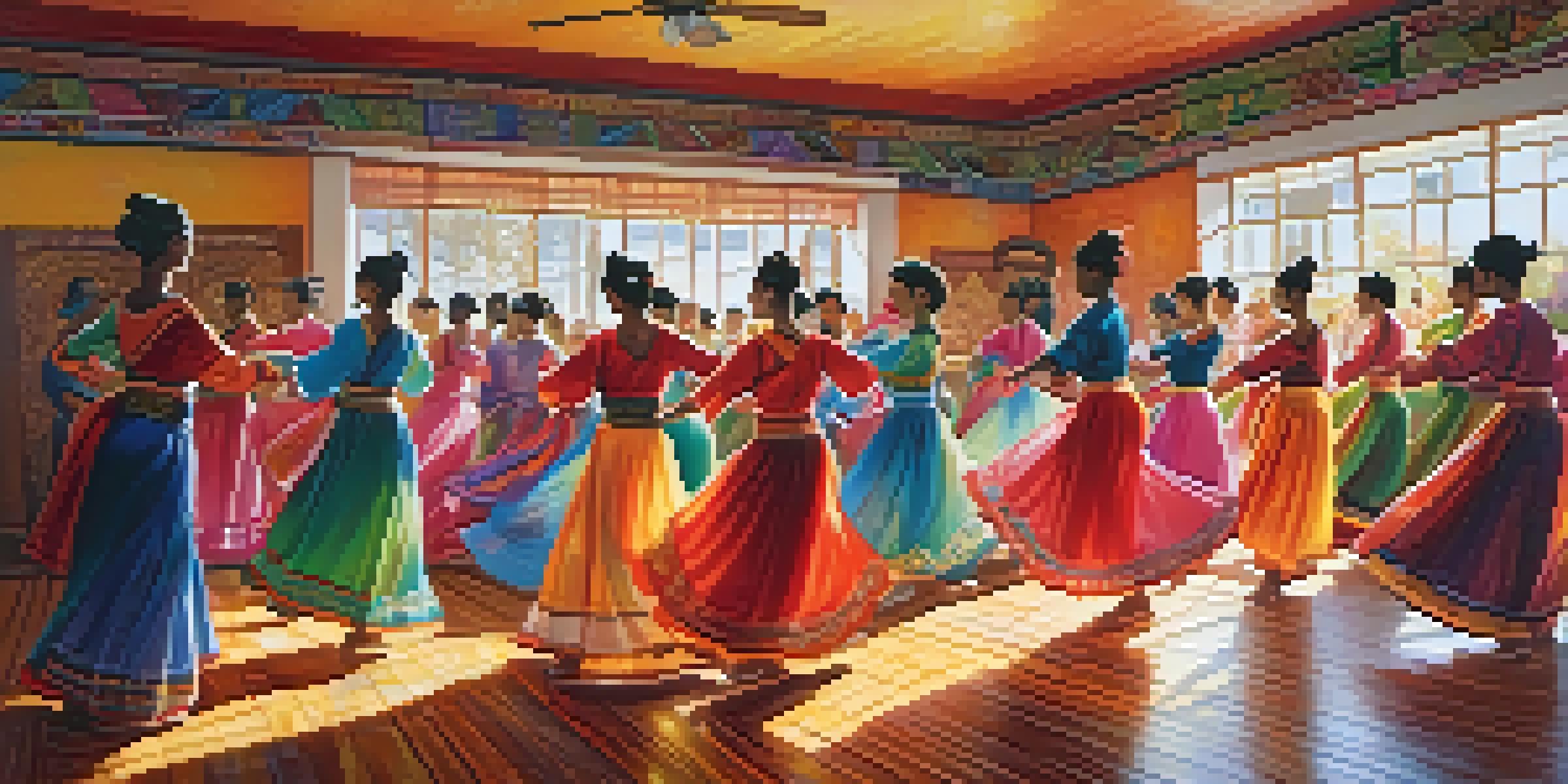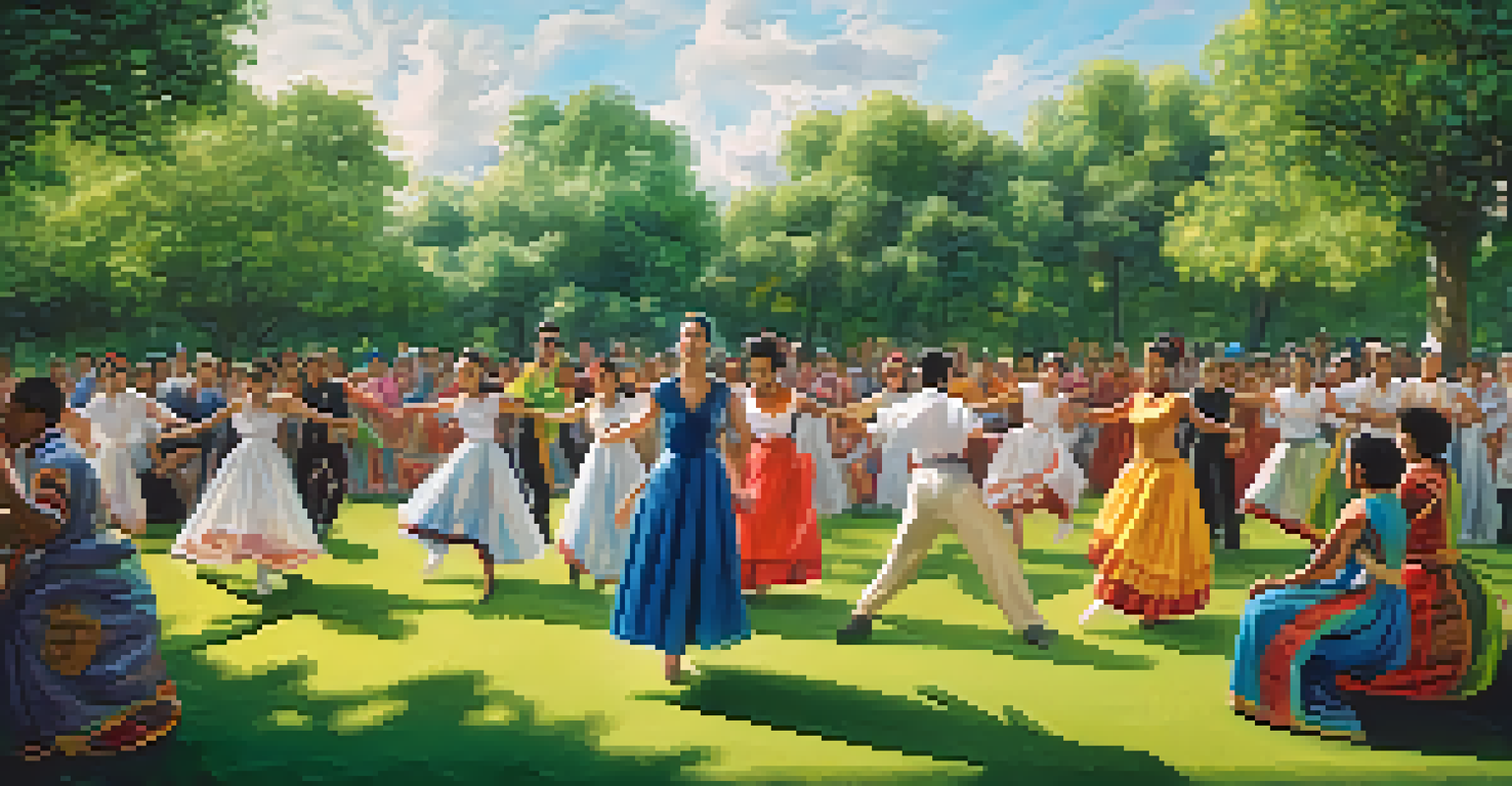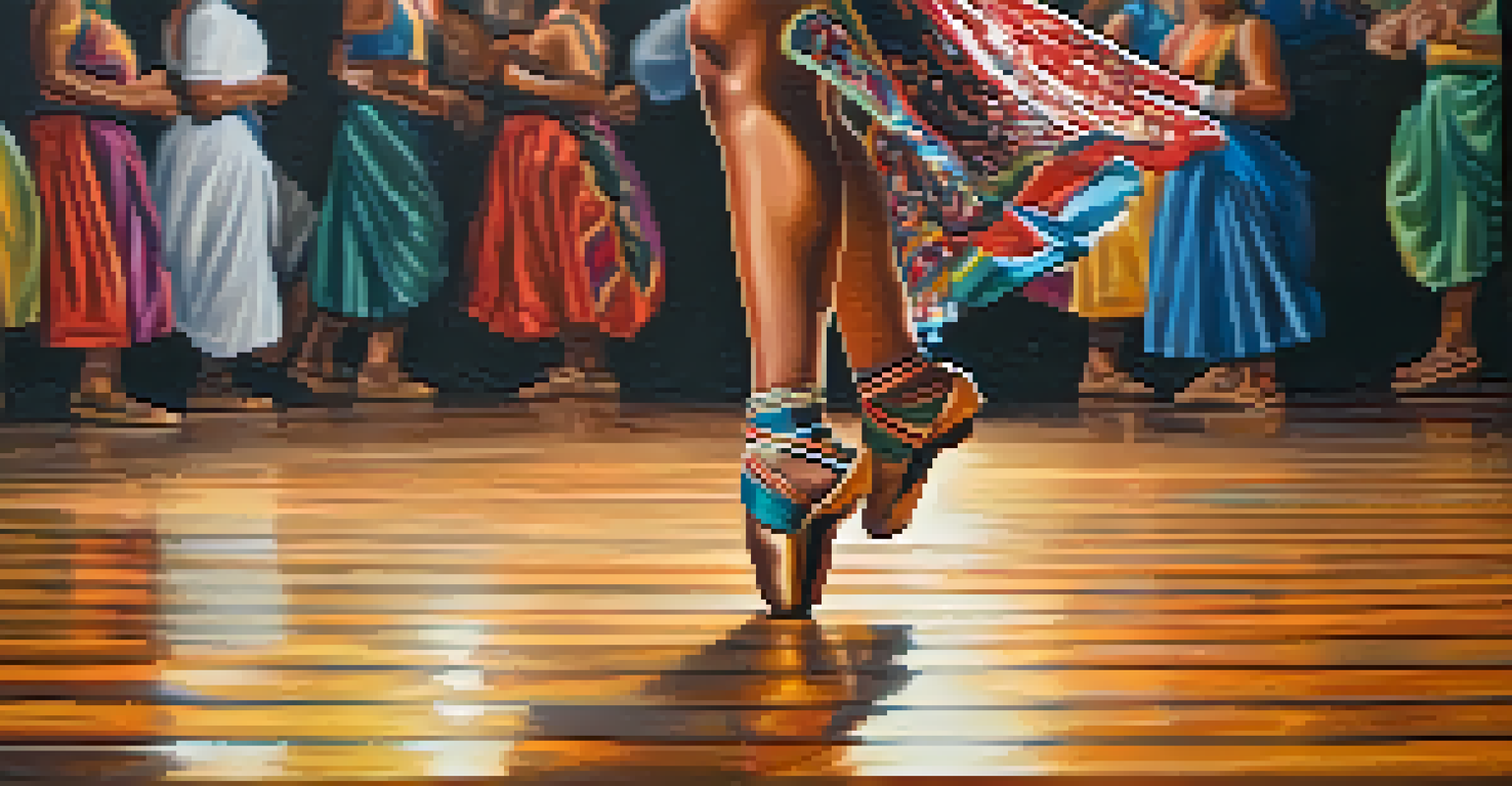Cultural Appropriation in Dance: Identity and Ethics

Defining Cultural Appropriation in Dance
Cultural appropriation in dance refers to the adoption of elements from one culture by individuals from another, often without understanding or respecting the original context. This phenomenon can be particularly sensitive in dance, where movements, styles, and traditions carry deep cultural significance. When dancers borrow from other cultures, they may unintentionally strip away the meaning and heritage associated with those movements.
Cultural appropriation is the act of taking or using elements from a culture without permission, especially when it comes to marginalized groups.
For example, consider a Western dance troupe that incorporates traditional Indian dance forms into their performance. If they do so without proper education or acknowledgment of the origins, it can be perceived as appropriation rather than appreciation. This distinction is crucial, as it highlights the importance of understanding the cultural weight behind the art form being borrowed.
Ultimately, defining cultural appropriation in dance requires a careful examination of power dynamics, respect, and authenticity. It's vital to foster dialogues about cultural exchange that prioritize mutual respect and understanding rather than exploitation.
The Impact of Cultural Appropriation on Dancers
Cultural appropriation can have significant emotional and social impacts on dancers from the cultures being appropriated. When their traditions are misrepresented or commodified, it can lead to feelings of alienation and disrespect. This is especially true for artists who have dedicated their lives to preserving and sharing their cultural heritage through dance.

For instance, dancers from indigenous communities may find it deeply troubling when their sacred dances are performed by outsiders at commercial events. Such instances can create a sense of loss, as the cultural significance of the dance is overshadowed by its entertainment value. The emotional toll can be profound, as the dancers witness their identity being diluted in the name of art.
Cultural Understanding is Key
Engaging with the cultural context of dance movements is essential to prevent appropriation and show respect for their origins.
Moreover, these experiences can affect the broader community's relationship with their cultural practices. If appropriation continues unchecked, it risks creating a cycle of misunderstanding and resentment, making it essential for all dancers to engage in respectful practices.
Ethics of Cultural Representation in Dance
The ethics of cultural representation in dance is a complex and often contentious issue. Dancers and choreographers must navigate the fine line between inspiration and appropriation, ensuring they honor the cultures they draw from. Ethical representation involves acknowledging the origins of the dance forms and giving credit where it's due, which fosters a sense of respect and integrity.
Art is a reflection of culture, but it is also a powerful tool for cultural exchange and understanding.
For example, when a contemporary dancer incorporates African dance styles, they should research the history and significance of those movements and consider collaborating with artists from that culture. This approach not only enriches the performance but also builds a bridge of understanding and respect between cultures. It transforms the act of borrowing into a celebration of diversity rather than an act of exploitation.
Ultimately, engaging in ethical practices in dance is about creating a space where all cultures are respected and valued. This requires ongoing education, dialogue, and a commitment to understanding the deeper meanings behind the movements we choose to embrace.
Case Studies: Appropriation vs. Appreciation
Examining specific case studies can help clarify the distinction between appropriation and appreciation in dance. One notable example is the use of hula dance in popular media. When performed authentically by Hawaiian dancers, hula tells a story of culture and history; however, when it is merely used as a backdrop in a music video, it risks becoming a caricature of its true essence.
On the other hand, performances that involve genuine collaboration with native Hawaiian dancers can be seen as appreciation. When artists engage with the culture thoughtfully and respectfully, they contribute to a more authentic representation that honors the art form's roots. This collaborative approach can lead to a richer exchange and a more profound understanding of different traditions.
Education Fosters Respectful Practices
Incorporating lessons on cultural sensitivity in dance education can help future artists navigate the complexities of cultural exchange.
These case studies illustrate the importance of context and intention in dance. By analyzing these examples, we can better appreciate the nuances of cultural exchange and work towards creating more respectful practices within the dance community.
The Role of Education in Curbing Appropriation
Education plays a crucial role in addressing the issue of cultural appropriation in dance. By raising awareness about the origins and significance of various dance styles, we can help dancers make informed choices about their performances. Workshops, seminars, and discussions can provide valuable insights into the cultural contexts of different dance forms, fostering a deeper understanding among artists.
For instance, dance schools can incorporate lessons on cultural sensitivity and ethics into their curricula. This would not only equip future dancers with the knowledge they need but also encourage them to approach their craft with respect and responsibility. Such initiatives can help create a generation of dancers who are more mindful of their cultural influences.
Ultimately, education empowers dancers to appreciate the richness of diverse cultures while avoiding the pitfalls of appropriation. By fostering a culture of learning, we can build a more inclusive and respectful dance community that celebrates rather than exploits.
Navigating Cultural Exchange in Dance
Navigating cultural exchange in dance requires a thoughtful and respectful approach. Dancers should aim for collaboration and dialogue, seeking to build relationships with artists from the cultures they wish to engage with. This not only enriches their performances but also honors the traditions they are inspired by.
For example, when a choreographer wants to incorporate elements from a specific culture, they can reach out to dancers from that background for insights and collaboration. This partnership can lead to a more authentic representation and a shared understanding of the cultural significance behind the movements. It’s about creating a space for voices from diverse backgrounds to be heard and celebrated.
Collaboration Over Appropriation
Building partnerships with artists from the cultures being represented allows for authentic performances that honor the traditions involved.
In this way, cultural exchange becomes a two-way street rather than a one-sided appropriation. By prioritizing collaboration and mutual respect, we can create performances that truly honor the beauty and depth of different cultural traditions.
Moving Towards a Respectful Future in Dance
As we look to the future of dance, it’s essential to cultivate an environment that respects and honors cultural diversity. Dancers, choreographers, and audiences alike must engage in conversations about cultural appropriation and its implications. By doing so, we can pave the way for a more inclusive dance community that values authenticity and respect.
Moreover, supporting artists from marginalized cultures can help create a more equitable landscape in the dance world. By providing platforms for underrepresented voices, we can enrich the art form and ensure that diverse narratives are shared and celebrated. This shift requires collective effort and a commitment to uplifting all cultures.

In conclusion, the journey toward a respectful future in dance involves continuous learning, dialogue, and collaboration. By recognizing the importance of cultural sensitivity, we can create a dance community that thrives on appreciation rather than appropriation, resulting in a richer, more diverse artistic expression.